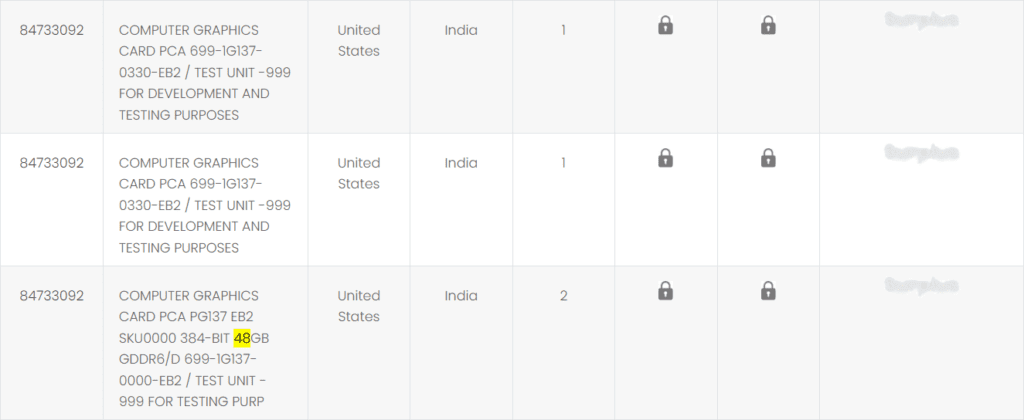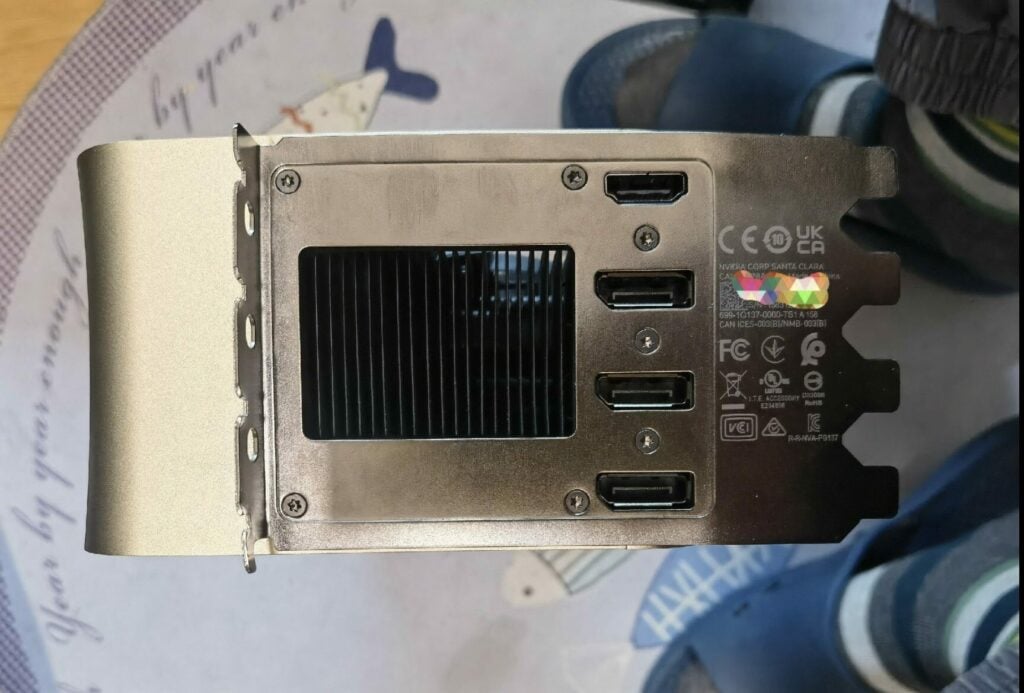A recent shipping manifest could be our first indication that NVIDIA is indeed developing a new Titan RTX graphics card based on the Ada architecture. The shipping manifests can be found on Volza, which tracks global import data and has several containers of “PG137-0000” GPUs (prototypes) on their way from the US to India for further testing and validation.
Several other GPUs are mentioned, but they have already been released as the RTX 4090, RTX 4080, and RTX 4070 Ti. There is currently no graphics card available that uses the PG137 board and has 48 GB GDDR6 memory. This could be mistaken for the RTX 6000 Ada, but it’s a completely different board design.
According to Kopite7kimi, the next-generation NVIDIA Titan RTX graphics card will be based on the Ada Lovelace GPU architecture and will include the AD102 GPU with 142 SMs and 18,176 CUDA cores. A similar chip with the AD102-400-A1 designation is rumoured to be used on the GeForce RTX 4090 Ti card.

Only the fully enabled SKU with all 144 SMs should be given the AD102-450-A1 designation, but such a product is unlikely to be released. It could be released later as another Workstation or BFGPU-class card, but no rumours have surfaced of a fully enabled Ada AD102 GPU.
The NVIDIA Titan RTX “Ada” is also said to have 48 GB of GDDR6 memory spread across a 384-bit wide bus interface.
Now, the listing clearly states GDDR6 memory rather than GDDR6X memory, but it would be strange not to include the fastest memory solution on a premium product like the RTX Titan.
One possibility is that standard Non-X memory is used to reduce the absurdly high power consumption, which is estimated to be around 800-900W. Another possibility is that the listing does not distinguish between GDDR6 and GDDR6X memory standards. The latter appears more plausible, as it is also the case with the same lister’s RTX 4090/4080/4070 Ti listings.

More recently, Matthew Smith of TechPowerUP reported that the NVIDIA Titan RTX “Ada” graphics card is being tested and has appeared in validation with 2235 MHz base and 2520 MHz boost clocks, as well as 48 GB GDDDR6X memory.
This does not imply that the card is ready for prime time, but rather that there is something more powerful out there that may or may not be released. The graphics card is expected to have a quad-slot cooling solution as well as a one-of-a-kind PCB and I/O design. The card would easily pass the 100 TFLOPs barrier even at stock clocks, given that the RTX 4090 can already hit 2.8-2.9 GHz boost frequencies with ease, and the TITAN would have done the same.
Also Read:








